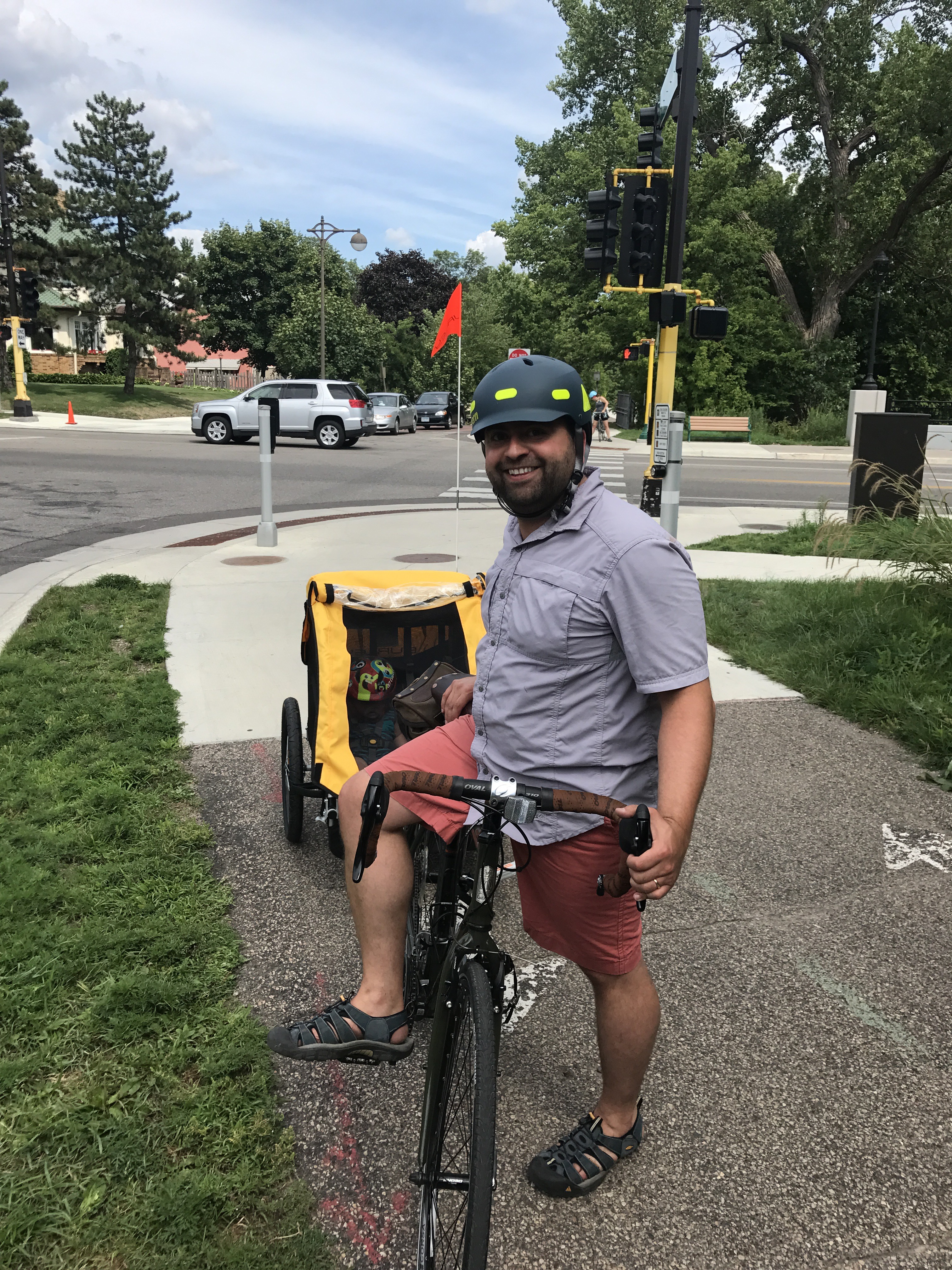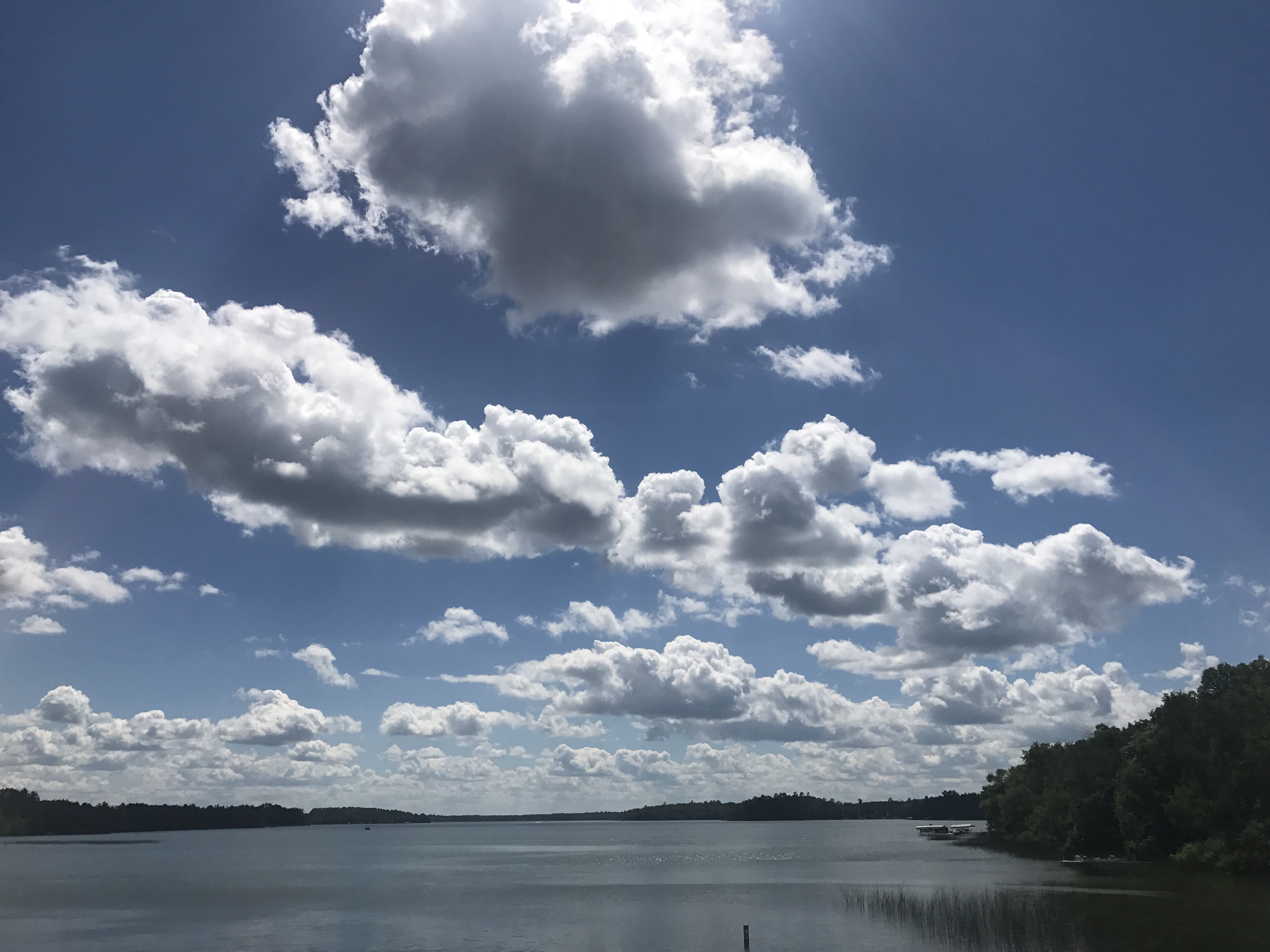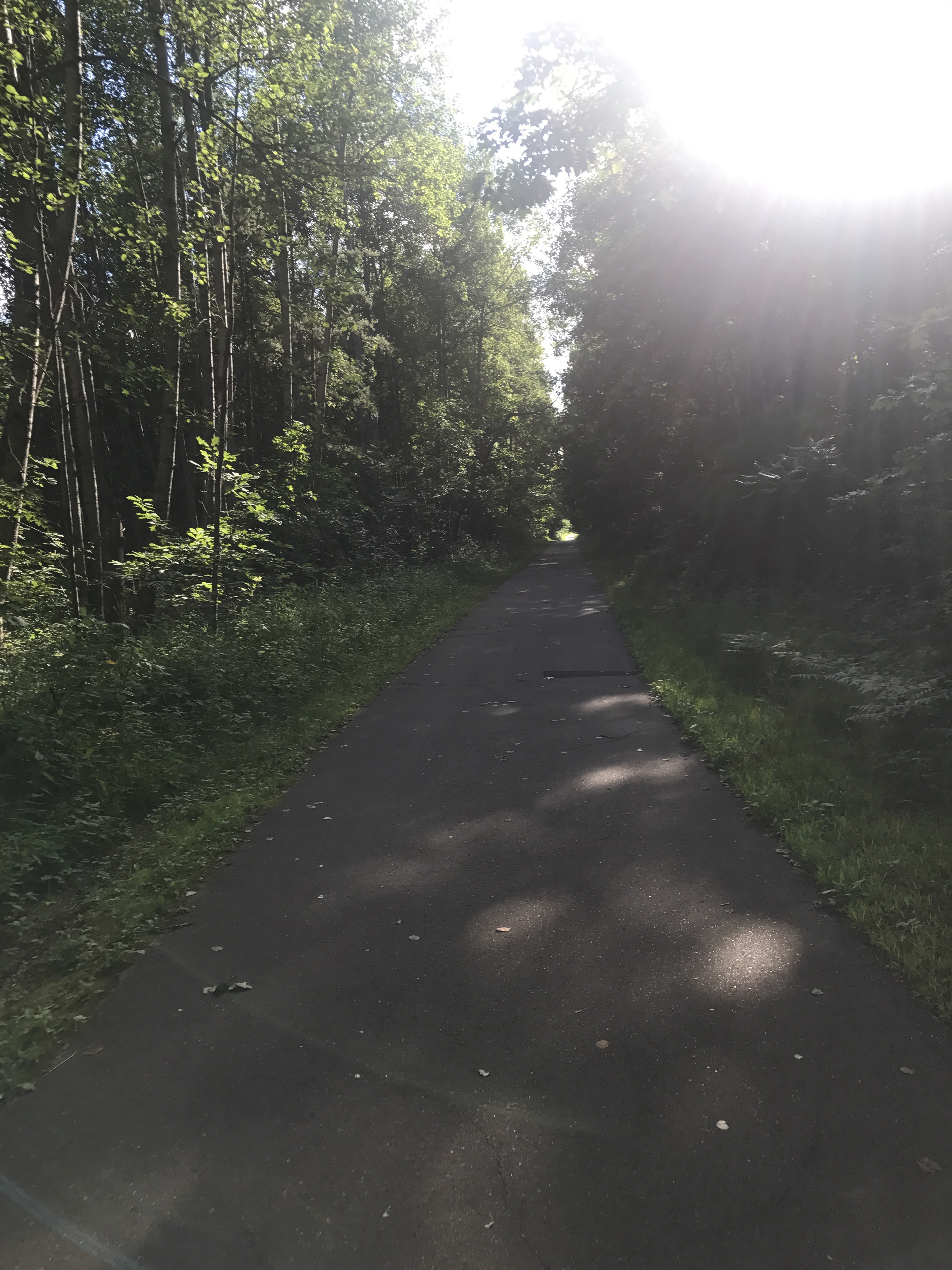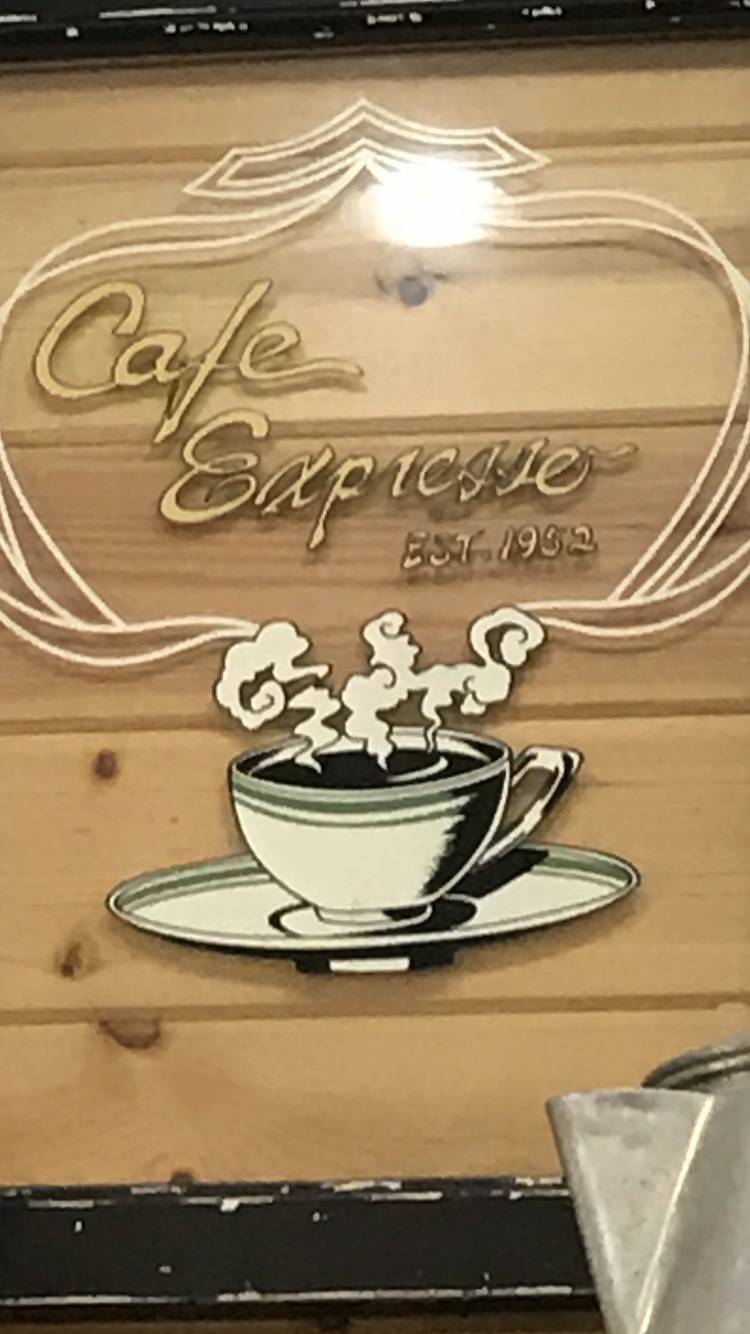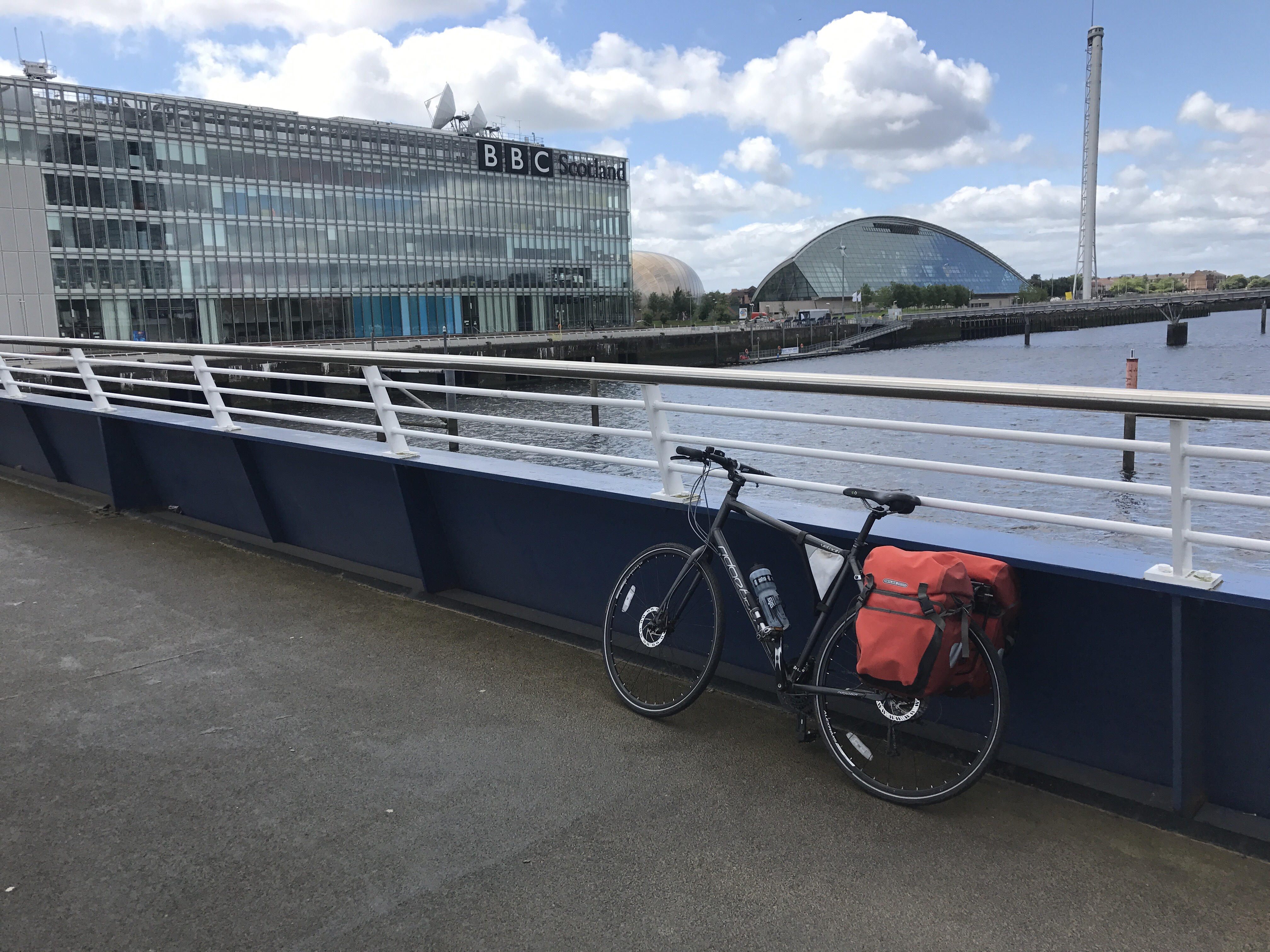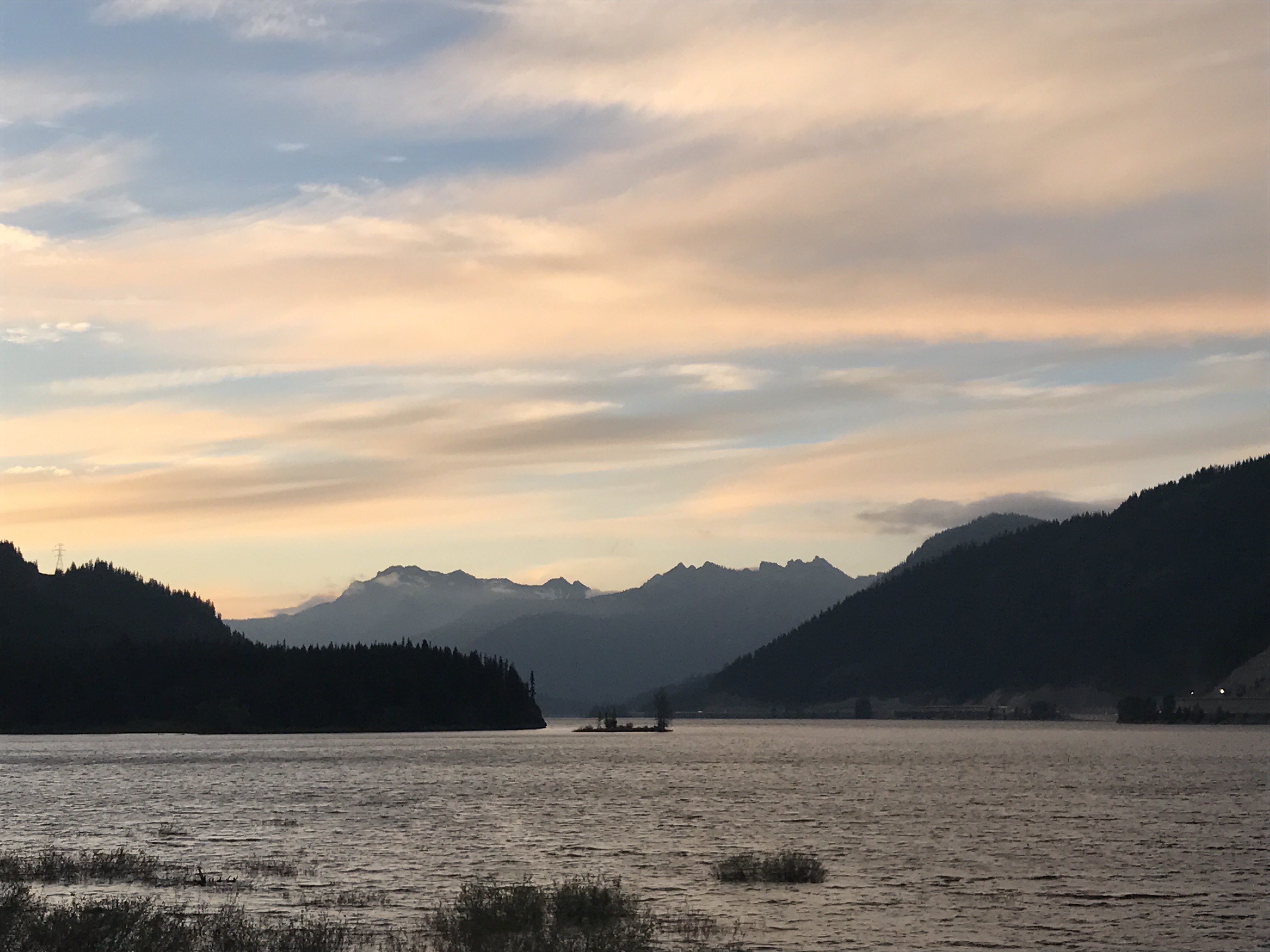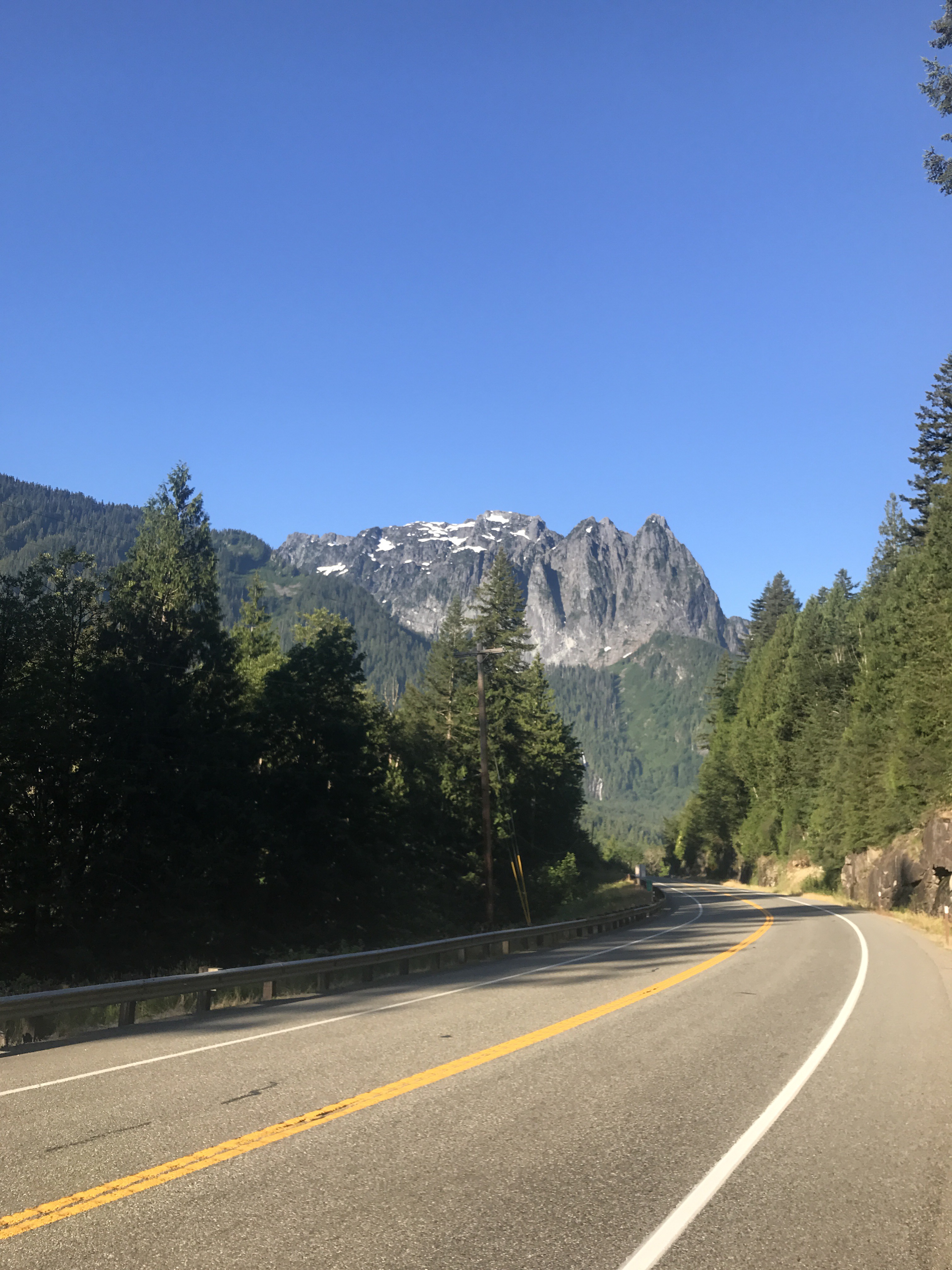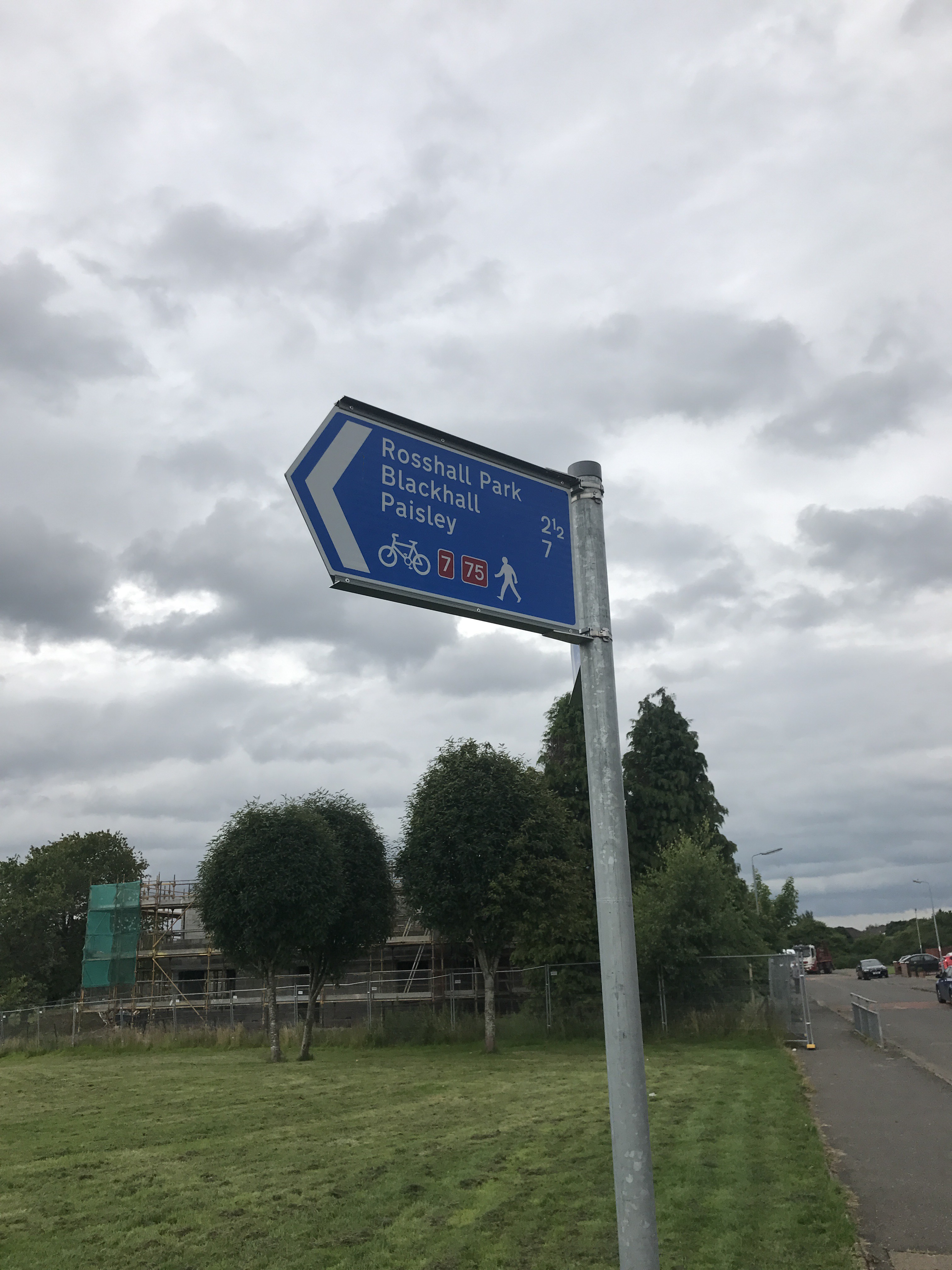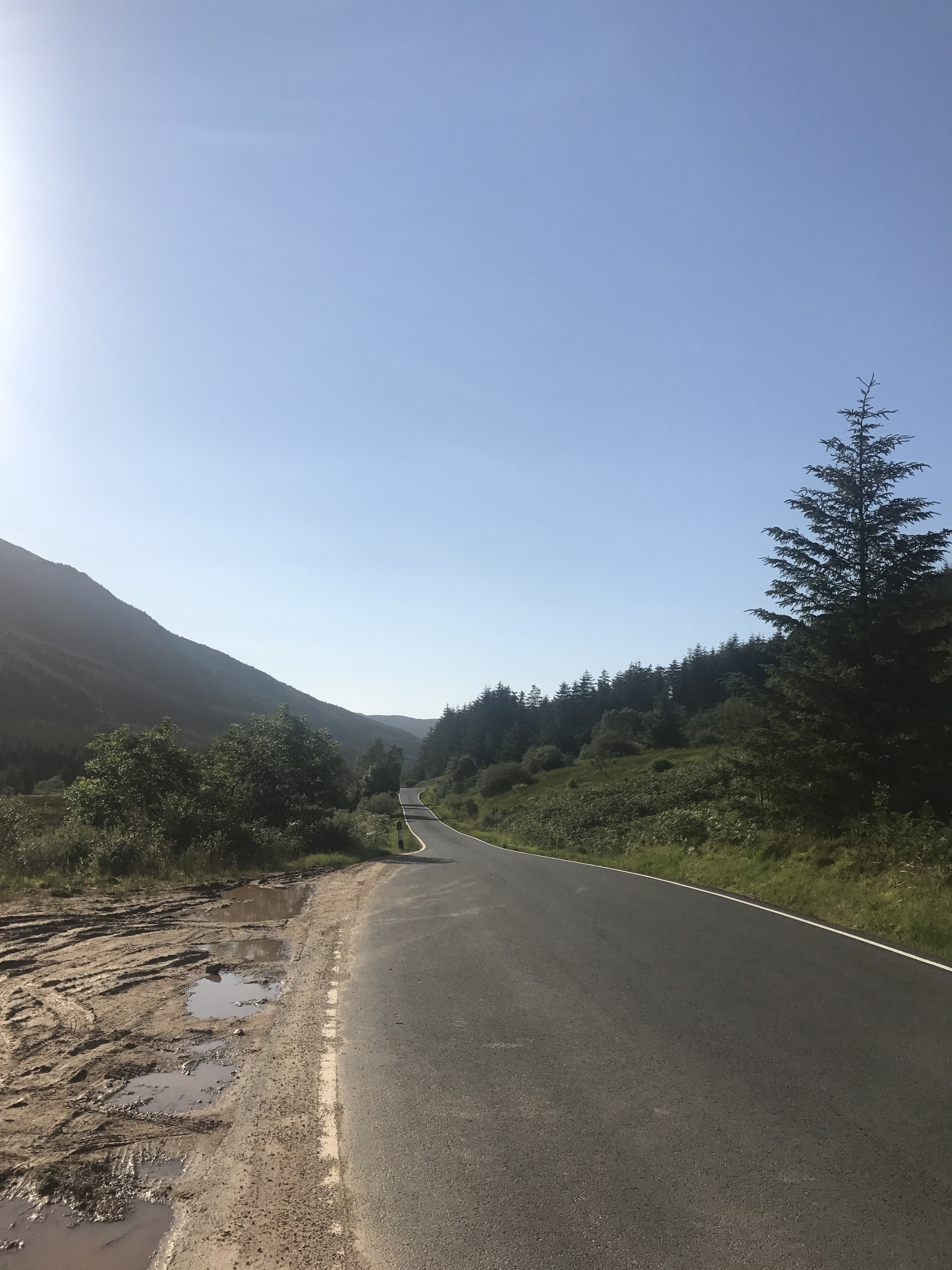It’s been over two weeks since I completed my Minnesota ride — so it’s high time for a brief recap of the last couple of days of this beautiful week. After a rather long day on Wednesday, I was in the mood for an easier Thursday, so rode down from Brainerd, exiting via the wide shoulder of MN371. The city of Brainerd represents somewhat of a border between the northern coniferous forests that define Minnesota’s iron and logging regions and the rich agricultural and deciduous lands of its southern half. The defining feature of my final two days was without a doubt the widening Mississippi river, along whose banks I would ride for the remainder of my trip.
Thirty-or-so miles down the road in the southern reaches of Crow Wing County, I passed the site of historic Fort Ripley, an abandoned American stronghold established in the 19th century to attempt to exert influence over the territories of what is now northern Minnesota. It was interesting to contemplate that at that time (1849) this was as far north as non-indiginous American influence extended. The fort is only an overgrown historic site now, though some of its ruined embankments can still be seen in a bend the lazy river as it flows south. I paused for this photo in the noonday sun, looking through the trees across to where the old fort would have been. I thought of genocide, and the terrible legacy that these sorts of places represented for the local Ojibwe and Winnebago peoples.
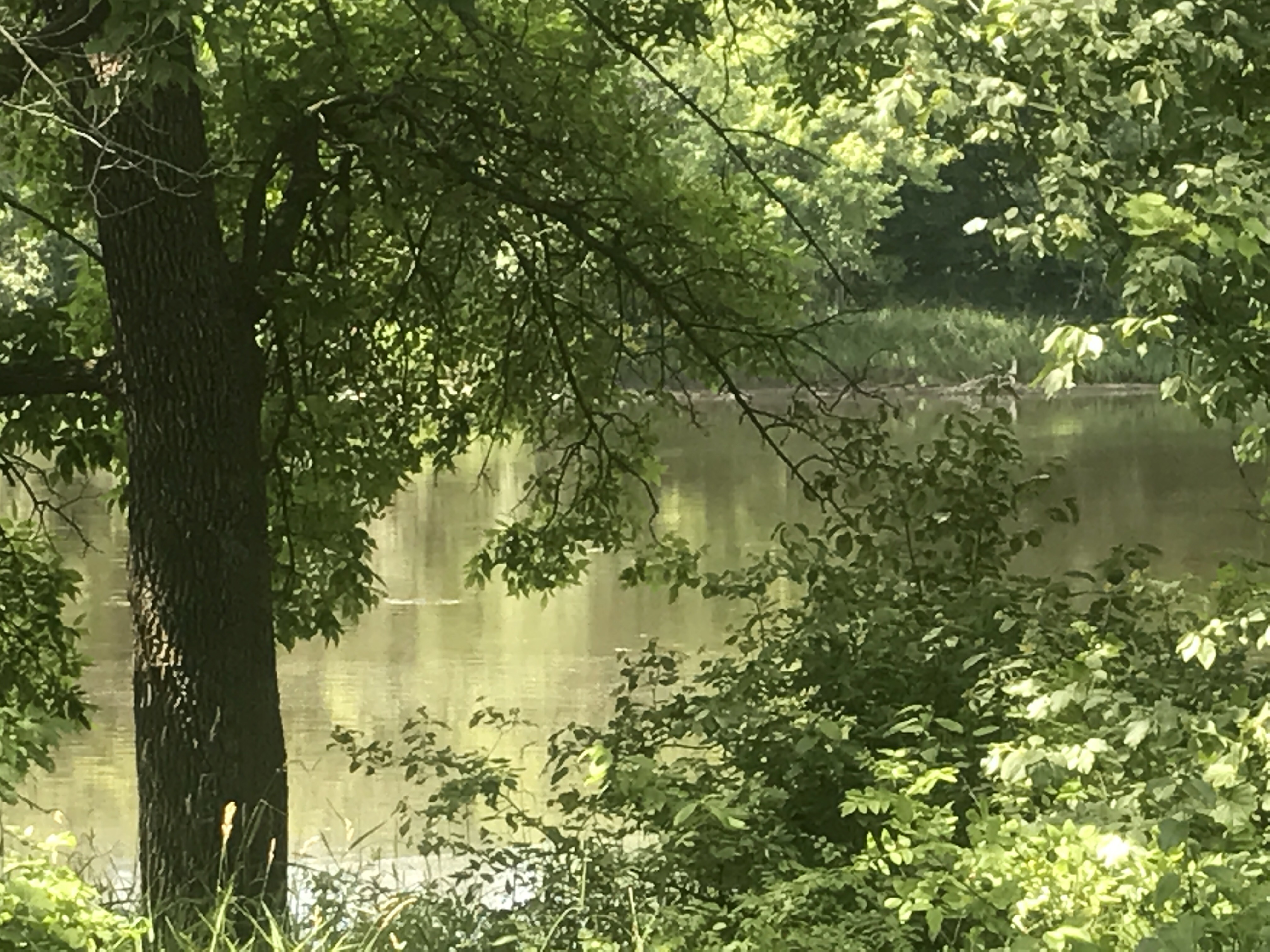
The river had widened since I’d last seen it way back in Grand Rapids, where boys waded well into its central channel to fish in the middle of town. Here, after more than 150 miles of winding and collecting through lakes and past the mouths of its tributaries, the river was the wide watercourse you’d imagine the Mississippi to be — already a great great river, seemingly ready to drive its way south through the middle of the country.

I was privileged to be able to spend the night with two dear friends who make their home just south of Little Falls, MN, in Morrison County. Here they are: two of my favorite people — Bob and Linda Mueller:
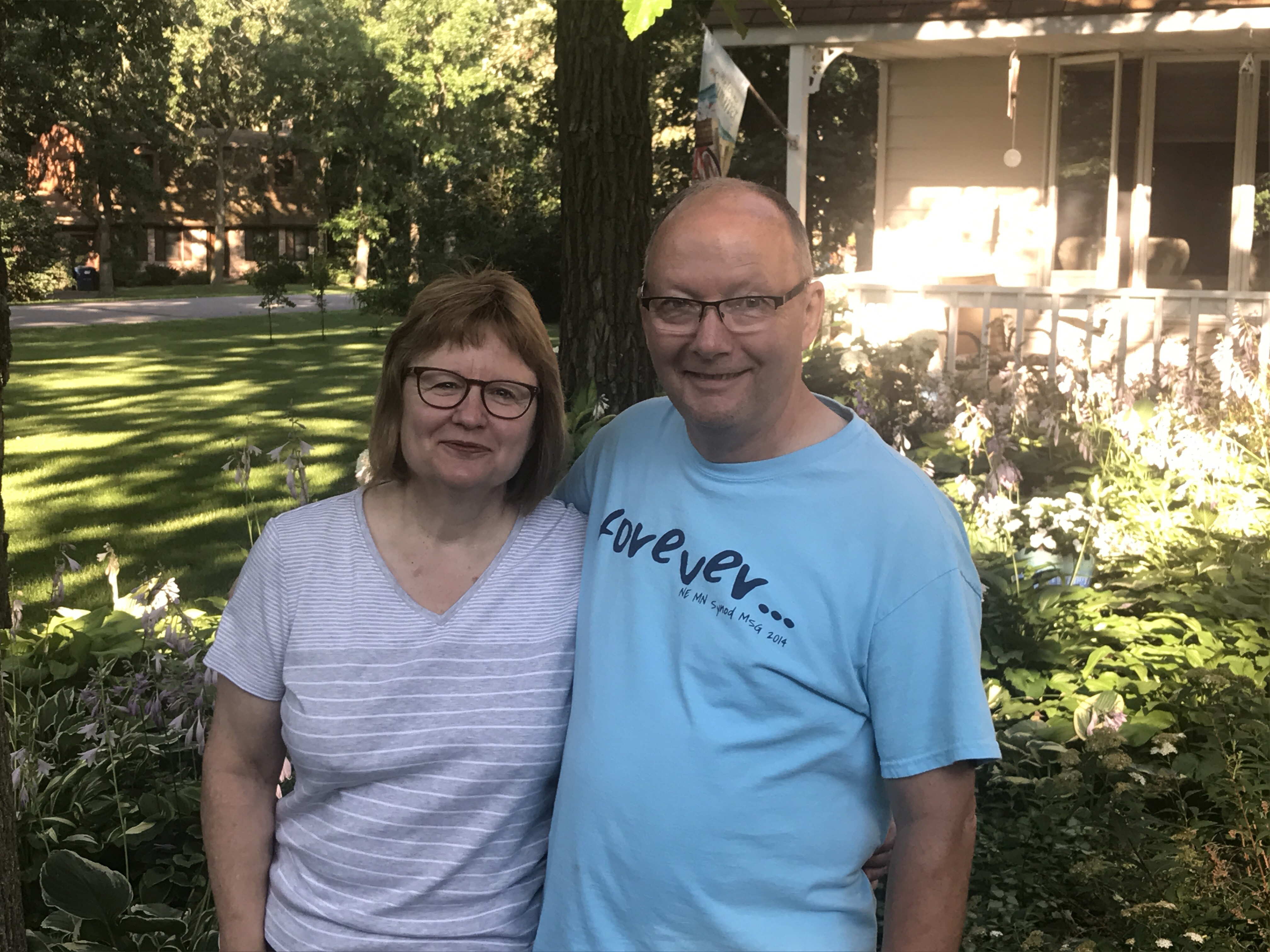
Bob and Linda and I go back a ways, and the story of our relationship is long and involving a small mountain village in Washington State, their daughter (and one of our best friends) Bethany, dogs, Seattle, family of choice, Lutherans, Vietnam veterans, Thanksgivings, emails, weddings and many other things — like I said, a long story. But it’s a joy to have people along the route of one’s bike ride who are willing to open their home in such a hospitable way, to share a meal and to show one around their beautiful town. I spent a wonderful night in Little Falls with these two in their gorgeous pine-shaded house nearly on the banks of the great river. It was a joy.
The next morning presented a choice — I could push on to my final destination in Minneapolis in one very long day (107 miles I made it) or I could spend the night somewhere between Little Falls and the twin cities. I prefered the first option since it would mean another great reunion with friends and one less night of camping on hard ground — but it also mean putting in a very long day of pedaling. I’d had an easy day on Thursday, and my time with Linda and Bob had refilled my energy reserves, so I set out somewhat early from the house and headed south along the river with the intention of ending my ride on Friday.

The morning ride was lovely — one of the best parts of the trip. The subtle valley of the Mississippi widened and becme suddenly more rich. Farms, which had been sporadic north of Little Falls, were suddenly all around. The forrest thinned and then finally almost failed, replaced by the isolated treed areas that ones sees among the fields of the cultivated midwest. Morrison County, like some of its surrounding areas (Mille Lacs and Benton Counties as well) is intensely Catholic, with Germans and Poles representing the bulk of the early settlers. The names of many of the towns are French — a legacy of les voyageurs who used the Mississippi as a super-highway in the days that they used to travel in this land. Every town — even the smallest — featured a beautiful 19th century catholic parish, with tall steeple. St. Could (named for Saint Cloud, Hautes-de-Seine, the Paris suburb through which I had bicycled in June one afternoon to reach the Palace of Versailles ) made a good late-morning stop, and the excellent MRT continued to guide me well into the shady center of St. Cloud St. University for a break at 45 miles.

After St. Cloud things began to change. A lovely bike path extended down the river about 10 miles south of the city, but after that it was out on the Great River Road for almost the remaining 60 miles of the day. There was more traffic, and it drivers were in more of a hurry. I was in the orbit of a city, and would soon enter the ex-urbs. The river road (designated by Congress as a scenic by-way in 1938) is in this part of the country a collection of old roads that follow the course of the river. These are no doubt very old routes, developed first for wagons and horses and only later for cars. Before the interstates and US highways were built, they were the primary overland route through central Minnesota. I am fascinated by America’s so-called “secondary” roads — these connectors of the old parts of towns and villages. So cruelly surpassed and obviated by superhighways (I94 intrudes closely on the river road a number of times south of St. Cloud and in places like Monticello) they were the originally routes along and around which European settlement was defined. These sorts of roads wound over and around hills rather than flattening them in the manner of larger and ruder freeways, and when they approached the limits of towns they often narrowed and turned, becoming main street, until emerging on the other side as the main artery to the next inhabited place. It was along this way that I pedaled in the now-muggy midwest day, reaching the bend in the river some 30 miles north of Minneapolis in the late afternoon heat in time to carb-load for the final push.
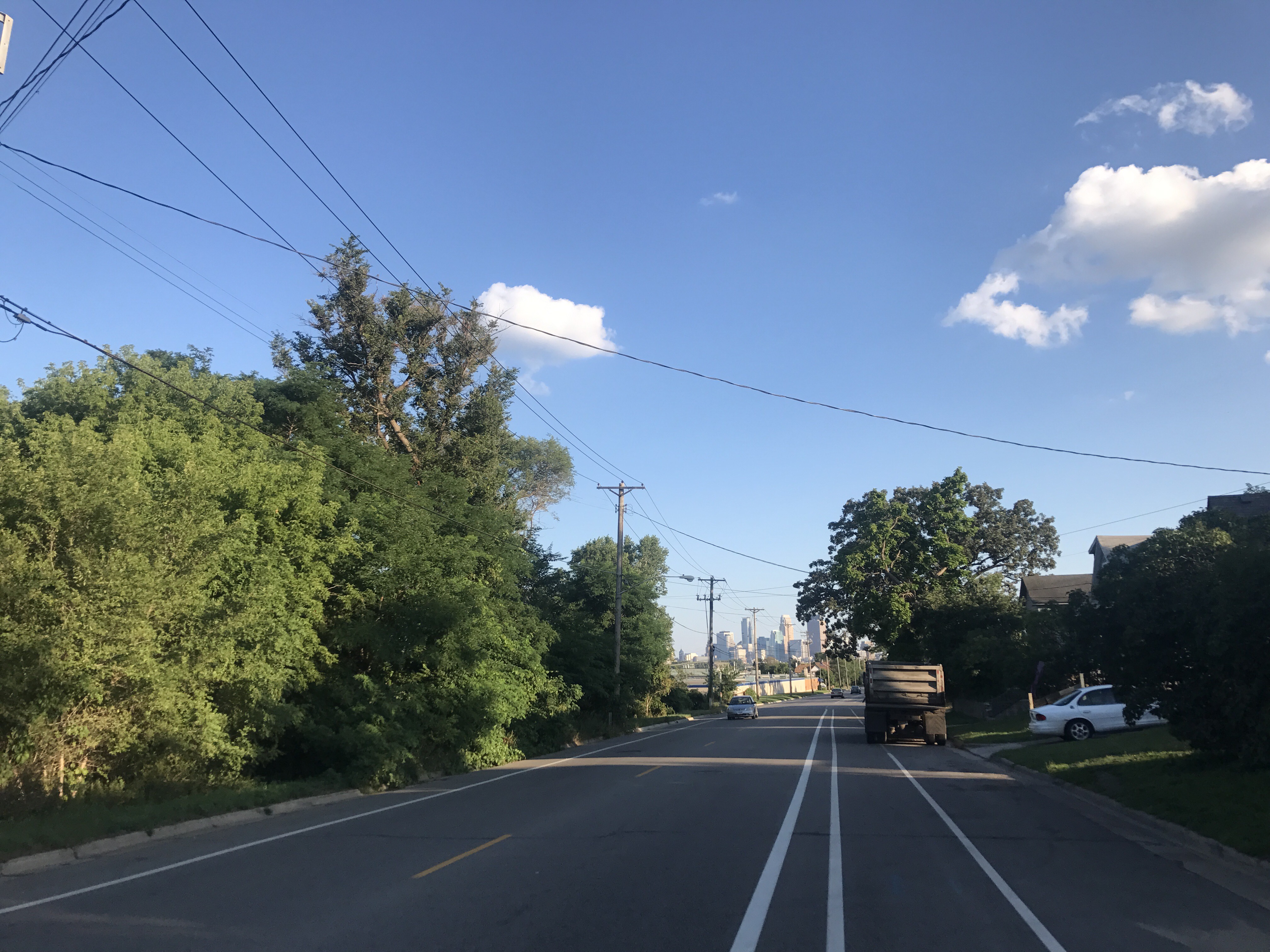
Getting in and out of cities is always the least pleasant part of any ride. Minneapolis is not so bad as these things go becaue it features a network of excellent trails which extend well into the suburbs. By Brooklyn Park, about 15 miles north of downtown Minneapolis, I was off=road, only emerging back into a bike lane at the northern limit of Washington Street for the final ride through gritty northern Minneapolis and then into downtown. For a few tired miles I could see the high-rises of Minneapolis framed in the perspective of the avenue, and I knew I was nearly done. I felt gratitude for my physical safety, and for the great privilege of riding through this amazing state. I am a western boy — I love my mountains and the marine air as it hits my face flying down the green western face of the Cascades. But if I have another, non-Cascadian home, it would surely be here in Minnesota: this stark, bountiful, forbidding and infinitely welcoming place whose extremes of climate and terrain are balanced by the mildness in the heats of its people.
I rolled up to my friends Bethany (Bob and Linda’s daughter!) and Stamatis’ house as the shadows lengthened. Bethany is a VA social worker who treats PTSD and addiction in veterans. Stamatis is a psychiatrist, working in community health with those affected by mental illness. They are two of my favorite people on earth. They’d just put their 9-month-old son (and our future God-son) Photios to bed, and we all relaxed in the calm backyard evening of their south Minneapolis home. I felt none the worse for wear after 107 miles, Matt L was due to arrive early in the morning, and I was surrounded by people who are like family to me. There are no better endings than this — to be at peace and in community after a long journey. Arrivals and homecomings are a big reason why I love journeying by bicycle, and why moving slowly, under my own power, lends extra meaning to the landscapes, both physical and human, through which I travel. Plus, there was beer, and a hot tub, and a chill weekend in Minneapolis to look forward to. All was right with the world.
